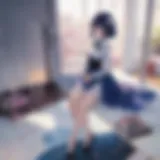Cultural Insights on Gilgamesh Adapted in Manhwa
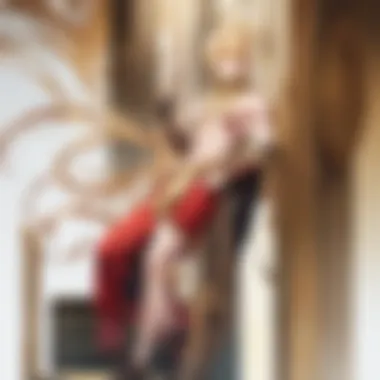

Intro
The Epic of Gilgamesh, often hailed as one of the oldest pieces of literature, transports readers into the world of myth and heroism. This narrative, rich in themes of friendship, mortality, and the quest for wisdom, takes on a new form through the lens of manhwa—a distinctive style of comics originating from South Korea. As we explore this intersection of ancient text and modern art, it becomes clear how manhwa interprets and adapts these timeless themes for contemporary audiences. Not only does this fusion breathe new life into the original story, but it also offers a fresh perspective that resonates in today’s culture.
In navigating the adaptation of the Epic of Gilgamesh into manhwa, several key points warrant discussion. From examining the core themes and character portrayals to analyzing the techniques embedded in the adaptation, this exploration aims to illuminate how historical narratives continue to evolve. Through various elements such as cultural significance, artistic representation, and audience reception, we will delve deeply into the essence of this adaptation. Readers can expect an engaging narrative that facilitates a richer understanding, bridging ancient worlds with modern storytelling methods.
As we progress through the sections, we will encounter episode reviews detailing key moments, character spotlights that focus on development and personality, and insights into the intricacies of manhwa-style storytelling as it compares to other forms of media. Together, we’ll unpack how this ancient epic finds a contemporary form and examine its relevance in the current cultural landscape.
Episode Reviews
Summary of the Episode
In the first episodes of the manhwa adaptation, the initial scenes set a dramatic tone reminiscent of ancient Sumerian civilization. The story opens with Gilgamesh’s formidable reputation dominating Uruk. The blend of vivid colors and intricate designs brings the era to life, allowing readers to step back in time with images that jump off the page. Readers are quickly introduced to Enkidu, the wild man, whose interactions with Gilgamesh encapsulate the essence of friendship at its core—a crucial theme of the epic.
Analysis of Key Events
One of the pivotal moments explored is the confrontation between Gilgamesh and Enkidu. Here, the manhwa uses dynamic panels to depict their intense battle, transitioning into a friendship that defines much of the plot. The adaptation does well to illustrate the evolution of their relationship by closely examining their dialogue and the complexities of their characters—in stark contrast to their initial combat. Each frame carries weight, emphasizing how their bond grows stronger as they embark on various adventures.
Discussion on Character Development
Character development plays a significant role in the adaptation. Gilgamesh, initially depicted as a tyrant, gradually reveals layers of emotion as he grapples with loneliness and the desire for eternal fame. Enkidu, on the other hand, evolves from a primal figure into an insightful companion, making the depth of their connection felt acutely throughout the narrative. Their journeys exhibit how the concept of ‘heroic masculinity’ is re-envisioned in this modern retelling.
Highlight Memorable Moments
A particularly striking moment occurs during their encounter with the Cedar Forest, showcased in a series of stunning illustrations that capture the awe and danger of their quest. The visuals not only highlight the physical challenges they face but also reflect the broader existential struggles tied to human ambition and mortality—a fundamental thread in the Epic of Gilgamesh.
This man's journey defies the constraints of time, bouncing between age-old lessons and modern aspirations.
In the upcoming sections, we will investigate individual character arcs more closely, diving into their backgrounds and how they hold significance both in the context of the original epic and the contemporary manhwa interpretation.
Foreword to the Epic of Gilgamesh
The Epic of Gilgamesh stands as one of the oldest literary works known to humanity, serving not just as a fundamental piece of ancient literature, but also as a deep wellspring of cultural insights. This epic, originating from Mesopotamia, is rich with themes of friendship, mortality, and the pursuit of wisdom, making it a subject of endless interpretation across various mediums, including manhwa. Understanding the epic is essential, as its intricate narrative and historical context have a significant influence on the stories we consume today.
Historical Context
To appreciate the depth of the Epic of Gilgamesh, one must first delve into its historical backdrop. Drafted during the early stages of civilization, likely around 2100 BCE, this poem intertwines the rise of the Sumerian city-states with the human experience of struggling against the inexorable nature of life and death. At that time, the Sumerians were not just chronicling adventures; they were documenting the very essence of existence within their daily lives.
The text itself has been discovered in various clay tablets, each revealing more about the life and beliefs of ancient peoples. The epic narrates the adventures of Gilgamesh, a king of Uruk, highlighting the societal values of heroism, friendship, and the quest for meaning. For instance, Gilgamesh's journey with Enkidu, transitioning from tyranny to camaraderie, reflects the Sumerian ideals of social responsibility and the collective experience of community.
Moreover, the backdrop of mythological entities serves to reinforce the relationship between the divine and mortal realms, illustrating how ancient cultures viewed their place within the cosmos. By exploring this context, readers can appreciate how this ancient text resonates in modern interpretations, particularly in the evolving landscape of storytelling found in manhwa.
Significance in Literature
The significance of the Epic of Gilgamesh in literature can't be overstated. It presents one of the earliest examples of storytelling that grapples with profound human questions. The layers of narrative complexity and character development were groundbreaking for its time, establishing a template that authors have followed through the ages. Themes such as the inevitability of death and the search for immortality speak to a universal audience, transcending time and culture.
The epic has also influenced notable works across various genres, inspiring Homer, Virgil, and countless others. Its exploration of the human condition—defining the hero’s journey, the bond of friendship, and the struggle against fate—has left an indelible mark on literature.
Importantly, modern adaptations, especially through the vibrant world of manhwa, continue to echo these themes. As readers engage with these new interpretations, they discover how the essence of Gilgamesh remains relevant. The characters, while drawn from an ancient narrative, reflect contemporary struggles, weaving past and present into a rich tapestry of meaning. Through the lens of manhwa, the epic not only survives but thrives, ushering timeless reflections into the modern age.
"The narratives we weave today are often echoes of those ancient stories that shaped the bedrock of our cultures."
Understanding Manhwa
Understanding Manhwa is crucial for appreciating how ancient narratives like the Epic of Gilgamesh can be reinterpreted and revitalized in modern contexts. This form of storytelling, rich in visual artistry and cultural resonance, offers a unique perspective that aligns well with the themes found in the epic. This section covers how manhwa serves as a bridge between the past and the present, illustrating the ways in which it both reflects and reshapes cultural narratives.
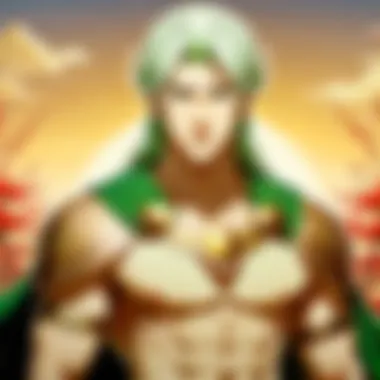

Definition and Origin
Manhwa, a term that often describes Korean comics, draws distinct characteristics from its Japanese counterpart, manga. The origins of manhwa can be traced back to the early 20th century, where it began as a form of political commentary and social storytelling. These works addressed societal issues while entertaining, laying the groundwork for what we see today. Unlike manga, which often follows specific genres, manhwa encapsulates a variety of themes, blending genres and styles to cater to diverse audiences.
In terms of structure, manhwa typically adopts a left-to-right reading format, which differentiates it from traditional manga. This small yet significant change in reading direction opens doors for more dynamic storytelling techniques, allowing authors to experiment with pacing and visual flow. The visual storytelling elements are harmonized seamlessly with the narrative, creating an engaging reader experience.
Cultural Impact of Manhwa
The cultural footprint of manhwa extends well beyond mere entertainment. It plays a role in shaping societal values and reflecting popular culture. Manhwa impacts readers by addressing contemporary issues—be it love, friendship, or hardship—through a shared cultural lens. The rise of online platforms has further democratized access, allowing manhwa to reach a global audience.
Some pivotal elements of manhwa's cultural impact include:
- Diverse Representation: Manhwa often includes a variety of characters and backgrounds, showcasing a more inclusive view of society compared to some traditional forms of media.
- Blending of Genres: The versatility of manhwa allows it to intersect with genres like fantasy, romance, and sci-fi, enticing readers from all walks of life.
- Influence on Global Trends: It has fostered a cross-cultural exchange that influences both Eastern and Western storytelling, creating a richer media landscape.
Manhwa doesn’t just tell stories; it shapes the very fabric of cultural understanding and appreciation in the modern world.
The Intersection of Gilgamesh and Manhwa
Exploring the relationship between the Epic of Gilgamesh and manhwa reveals layers of cultural interpretation that enrich the understanding of both mediums. At its core, this intersection highlights how ancient stories can transcend time and locale, profoundly influencing modern art forms. The adaptation of such enduring narratives into manhwa not only preserves their essence but also revitalizes them for a new audience. This can spark interest in ancient literature among younger generations who might not otherwise encounter it.
Manhwa, with its unique artistic flair, presents an opportunity to depict emotions and themes from the Epic of Gilgamesh in an engaging visual format. The dynamic illustrations combined with vivid storytelling breathe new life into Gilgamesh's quest for immortality and his profound friendship with Enkidu. Utilizing the stylistic elements inherent in manhwa, like expressive character designs and captivating panel layouts, allows the narrative to resonate deeply with readers.
While examining the intersection of these two cultural artifacts, several important considerations emerge:
- Cultural Resonance: Manhwa acts as a bridge, connecting ancient Mesopotamian tales with contemporary values and beliefs. This can foster a sense of continuity between the past and the present, showcasing how fundamental human experiences — love, loss, and the quest for meaning — transcend cultures.
- Artistic License: Adaptation involves a delicate balance between fidelity to the original text and creative interpretation. Scriptwriters and artists must navigate the tightrope of staying true to Gilgamesh's characteristics while reimagining them in a way that appeals to modern sensibilities.
- Audience Engagement: Understanding modern viewers' preferences is crucial. The manhwa adaptations of Gilgamesh offer relatable themes, compelling character arcs, and a visual storytelling approach. This layered interaction with the narrative enhances both emotional engagement and intellectual contemplation.
In summary, the dialogue between the Epic of Gilgamesh and manhwa is not just a literary exercise, but a significant cultural interaction. Readers and artists alike stand to gain from this exploration, forging connections that illuminate the heart of humanity across ages and artistic forms.
Adapting Ancient Texts
Adapting ancient texts like the Epic of Gilgamesh into manhwa involves careful consideration of both content and form. The narrative, originally inscribed on clay tablets, has the potential to be transformed into a visually driven storytelling medium. This process begins with respecting the core themes and characters of the ancient epic while imbuing them with nuances that align with today’s societal values. For instance, Gilgamesh’s character can be explored in much greater emotional depth through facial expressions and body language that are emblematic of manhwa's art style.
Additionally, direct adaptations often need to condense complex narratives. This necessitates distillation of essential plot points while retaining the overall essence — an endeavor that can lead to innovative storytelling techniques. By shifting focus onto dialogues or character interactions, manhwa can illuminate subplots that may be buried in the lengthy original text. This allows for a fresh lens through which to experience Gilgamesh’s journey.
Key elements in adapting ancient texts include:
- Character Development: Transforming Gilgamesh and Enkidu from flat archetypes into multi-dimensional characters enhances relatability.
- Thematic Recontextualization: Themes like friendship and mortality must be explored in contemporary contexts; this allows the narrative to remain relevant.
- Visual Symbols: Implementing visual motifs can evoke emotional responses, creating a richer storytelling experience.
Ultimately, adapting ancient texts in a modern artistic context challenges creators to maintain loyalty to historical accuracy while inviting new layers of interpretation.
Themes and Motifs in Adaptation
In examining the Epic of Gilgamesh through the lens of manhwa, themes such as friendship, the quest for immortality, and the human condition emerge powerfully. Manhwa adaptations have the capacity to explore these themes not just as abstract concepts, but as lived experiences relevant to today’s audiences.
Friendship between Gilgamesh and Enkidu is a cornerstone of the epic. In manhwa, this relationship can be thoroughly explored through dialogues, illustrations, and visual metaphors that highlight their bond. For example, the artistic choice to depict moments of vulnerability during their journey could speak volumes about camaraderie amidst challenges.
The quest for immortality also resonates deeply. In an age where societal anxieties about aging and legacy loom large, depicting Gilgamesh’s struggles in visually compelling narratives can bring forth powerful reflections about life and death. Utilizing different art styles or contrasting color palettes to characterize Gilgamesh’s journey can heighten the emotional heft of his quest.
Furthermore, the exploration of the human condition remains pertinent, encouraging readers to reflect on their own lives. In manhwa, using a diverse cast of characters can present different perspectives on these core themes, reinforcing that the essence of the epic lies in its universal relevance.
In summary, the intersection of the Epic of Gilgamesh and manhwa presents fertile ground for thematic exploration. By adapting these ancient motifs to contemporary storytelling, creators not only honor the original text but also breathe life into its lessons for modern readers.
Character Analysis in Manhwa Adaptations
Understanding character dynamics within manhwa adaptations of the Epic of Gilgamesh reveals a vital layer of storytelling. Character analysis offers a glimpse into how ancient archetypes are reshaped to fit modern sensibilities, enhancing the narrative's relevance to today's audience. The unique medium of manhwa allows for visual representation, which often deepens the emotional connection between the characters and the readers. Here are some key aspects to consider when analyzing characters from these adaptations:
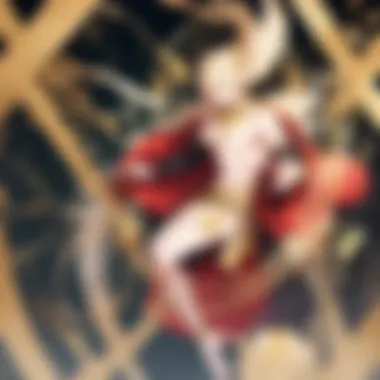

- Cultural Resonance: Characters are not just figures on a page; they embody cultural values and conflicts that resonate with contemporary readers. Manhwa often takes these ancient personas and reinterprets them through a cultural filter, aligning them with societal norms and expectations of the present day.
- Narrative Depth: By examining the changes in characterization, one can perceive how the manhwa fosters new themes and moral complexities. This isn't merely about dressing Gilgamesh in modern clothes; it’s about rethinking his journey and motivations. Why does he seek immortality? What does friendship mean in a context that might seem entirely foreign today?
- Visual Choices: The portrayal of characters is key in amplifying their traits. For example, expressions, body language, and even artistic styles can paint a clear picture of a character’s psyche. This visual storytelling enhances the reader's understanding of characters’ internal struggles and relationships.
Overall, character analysis forms the backbone of understanding the emotional and thematic richness of the story as presented in manhwa.
Gilgamesh: A Hero Reimagined
In manhwa adaptations, Gilgamesh, the titanic king of Uruk, is often depicted not just as a ruler but as a complex figure grappling with universal questions of existence and power. Rather than merely a demigod with brute strength, he may be portrayed as flawed, ambitious, and vulnerable.
This reimagining manifests in various ways,
- Motivation Shift: Instead of an all-mighty hero, he might represent a man seeking validation, friendship, and acceptance. Through modern lenses, his journey is less about defeating foes and more concerned with understanding himself and forging significant bonds.
- Visual Representation: Illustrations play a pivotal role. An artist might choose to give him a weary yet determined expression, showing both his burdens as a leader and his personal vulnerabilities. Such choices invite the reader to empathize with him on a deeper level.
Ultimately, Gilgamesh’s character becomes a vessel for exploring the timeless motifs of power, companionship, and the search for meaning. His re-imagined narrative resonates with modern audiences, allowing them to explore personal dilemmas through his legendary quest.
Enkidu: The Wild and Tame
Enkidu represents not only the wild—untamed nature—but also the shifting boundaries between civilization and savagery. In the context of manhwa adaptations, his character serves as a compelling foil to Gilgamesh, presenting contrasting values and perspectives.
- Embodied Duality: Enkidu stands at the intersection of chaos and order. Originally created to humble Gilgamesh, he evolves into a complex character who embodies the harmony between instinct and reason. His depiction might emphasize a rough exterior paired with a gentle heart, showcasing the beauty of the untamed spirit.
- Cultural Relevance: Manhwa adaptations often highlight Enkidu’s relationship with nature, making him a symbol of ecological awareness. His character could mirror modern concerns about the environment, resonating with readers who grapple with themes of conservation and ecological balance.
In summary, Enkidu’s journey from wildness to civilization—and his eventual friendship with Gilgamesh—offers a rich narrative tapestry. His evolution reflects deep social and cultural themes, appealing to readers who appreciate the complexities inherent in the human condition.
Visual Storytelling Techniques in Manhwa
Visual storytelling in manhwa serves as a robust medium that amplifies the narrative of the Epic of Gilgamesh. Utilizing imagery to evoke emotions and deliver plot intricacies, manhwa transcends mere text. It taps into readers’ visual sense, creating engagement through dynamic illustrations and layouts. As the story unfolds, these techniques enable characters’ experiences to resonate more deeply with an audience potentially unfamiliar with the original epic.
Manhwa leverages distinct artistic styles and panel compositions to narrate stories that can seem complex at first. This not only aids in understanding the plot but also enhances the enjoyment of the reader. Here, we will explore two key visual storytelling aspects and their significance, shedding light on how they breathe life into ancient narratives.
Artistic Styles and Choices
Artistic choices in manhwa vary widely, from sharper lines that emphasize dramatic tension in scenes to softer, rounded styles that may evoke a sense of nostalgia or warmth. When adapting Gilgamesh, artists often choose styles that reflect ancient themes yet feel contemporary to today’s audience.
- Line Work: In some adaptations, thick lines might be used for characters representing strength, mirroring Gilgamesh's heroic stature. Conversely, delicate lines could illustrate emotional moments, such as Enkidu’s connection to nature, highlighting the contrast between civilization and wildness.
- Color Palette: The color choices can also shift depending on the scenes. Darker shades may be employed to depict moments of despair, whereas brighter colors can be selected for scenes of triumph or realization. This deliberate use of color further immerses the reader into the emotional landscape of the characters.
- Character Design: Character designs are often embellished with modern touches, making them relatable while still rooted in their original cultural context. These decisions are not just cosmetic but play a critical role in how the reader perceives the personality and journey of each character.
"The magic of manhwa lies in its ability to fuse ancient stories with modern perspectives, allowing a rich exploration of themes through unique visual expressions."
Panel Layouts and Composition
Panel layouts in manhwa are another crucial aspect that contributes to effective storytelling. Unlike Western comics, which often maintain a standardized format, manhwa employs a variety of layouts that engage the reader’s eye and pace the reading experience.
- Dynamic Flow: A staggered panel layout can convey fast-paced action, guiding the reader’s gaze through the page in a way that mirrors movement within the narrative. For instance, in a battle scene between Gilgamesh and the bull of Heaven, the artist may choose diagonal panels to convey urgency.
- Emphasis on Moments: Larger panels can encapsulate profound emotional revelations or significant action; for example, a full-page panel displaying Enkidu’s transformation from wild to a more civilized being captures the critical thematic shift in the story.
- Negative Space: Effective use of negative space can heighten tension in a scene. Empty spaces can evoke feelings of isolation or confrontation and draw attention to the characters' expressions and actions, adding layers to the emotional depiction of the narrative.
In summary, the myriad visual storytelling techniques employed in manhwa adaptations not only serve to enrich The Epic of Gilgamesh but also ensure that contemporary audiences can relate and connect with this historic tale. As these techniques evolve, they continue to keep the ancient epic alive and relevant, bridging the gap between past and present.
Mythological Influences in Manhwa
In the realm of storytelling, mythology serves as a wellspring of inspiration. Manhwa, as a distinct form of comics originating from South Korea, utilizes these ancient narratives to weave modern tales. The influence of mythology in manhwa is not merely decorative; it carries significant weight that enhances character depth, narrative layers, and cultural authenticity.
This article aims to uncover how mythological influences shape manhwa, particularly in adaptations of the Epic of Gilgamesh. By tapping into these age-old stories, creators imbue their works with a resonance that transcends time, drawing on universal themes that speak to both contemporary audiences and the original epic’s essence.
Comparative Mythology
When examining manhwa adaptations of classic narratives like Gilgamesh, one cannot overlook the comparative approach to mythology. Different cultures interpret similar myths through unique lenses, often leading to intriguing parallels and contrasts. In this case, the epic’s themes of friendship, mortality, and the quest for meaning find echoes in various mythologies worldwide, from Greek to Norse to Asian legends.
For instance, Gilgamesh’s relationship with Enkidu can be juxtaposed with various hero-companion dynamics across different cultures. Readers might find similarities with the bond between Achilles and Patroclus from** Greek mythology** or even with the sibling-like connection between Sun Wukong and Zhu Bajie from the Journey to the West. Such comparisons help illustrate how fundamental human experiences resonate across diverse narratives, making them relatable.
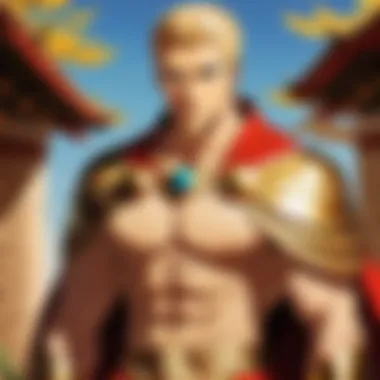

- Key Themes to Explore:
- Friendship and Loyalty
- The Quest for Immortality
- The Hero’s Journey
By employing comparative mythology, manhwa writers can strategically enhance their storytelling, tapping into a rich tapestry of shared human experiences that readers recognize and appreciate. This allows for both familiarity and innovation, which is crucial in engaging the audience while staying true to the foundational text.
Intertextual References
Intertextuality is another vital aspect in the conversation of mythological influences within manhwa. This concept emphasizes how texts interact with and reference one another, creating a web of connections that enriches the reading experience. In the landscape of manhwa, references to the Gilgamesh epic are layered and multifaceted, appearing not just in direct adaptations but also in the thematic elements and character arcs.
Characters often embody traits that are directly drawn from the Gilgamesh narrative but are infused with localized flavors and contexts. For example, a character may display the raw strength and impulsiveness of Gilgamesh but also resonate more with contemporary notions of heroism and vulnerability, reflecting real-world societal issues.
Additionally, intertextual references may include nods to other works, whether they be traditional texts or pop culture artifacts. Such layers can create a richer backdrop for readers, helping them navigate the complexities of the story by contextualizing characters' journeys in a broader mythological and literary context.
For readers, these connections offer an exciting opportunity to explore not just the adaptation of Gilgamesh, but also an amalgamation of various cultural narratives that have come before, allowing for a meaningful dialogue between the ancient and modern.
"Understanding the intertwining of myth and modern stories allows us to glimpse the ever-evolving nature of narrative, where old tales meet new interpretations."
By embracing these mythological elements, manhwa provides a fertile ground for exploring perennial human concerns, ensuring that the ancient tales remain relevant and compelling for today’s audience.
Modern Reception of the Gilgamesh Manhwa
The modern reception of the Gilgamesh manhwa is a fascinating topic. It sheds light on not only how ancient stories are refashioned for contemporary audiences but also how those narratives resonate in today's cultural landscape. The engagement with these adaptations reveals a lot about current society's values, preferences, and their connection to timeless themes.
Audience Engagement and Feedback
The reaction from audiences towards the manhwa adaptation of Gilgamesh can be quite telling. Readers often share their thoughts through social media platforms or community forums like Reddit. Discussions swirl around various aspects of the manhwa - its art style, character development, and how it captures the essence of the original epic. Individuals express how the story connects to their personal experiences or reflects modern dilemmas, like the quest for friendship, the nature of power, and the search for immortality.
On platforms such as Facebook, fans form communities where they dissect characters' motivations and compare them with the more ancient versions. This level of engagement shows the adaptation isn't merely a retelling of Gilgamesh’s odyssey but a reimagining that speaks to the struggles and aspirations of contemporary individuals. Moreover, these connections attract a wider audience, pulling in those who might not typically read the original epic.
As a result, feedback often focuses on both the praises and critiques of how effectively the manhwa sculpts age-old narratives for modern consumption. Fans appreciate when adaptations remain faithful to the underlying themes while infusing a modern perspective, crafting a rich tapestry that engages diverse readers.
Critical Reviews and Perspectives
Critical reviews play an essential role in shaping the perception of the Gilgamesh manhwa. Reviewers, from literary critics to casual bloggers, analyze the adaptation's artistic merits and narrative choices. The diversity of perspectives provides a comprehensive lens through which to understand the work’s impact on literature and culture.
Some critics praise the manhwa for its innovative narrative structure, highlighting how it distills complex themes into digestible formats without losing their essence. Reviews may point out how the adaptation uses visual storytelling to enhance emotional depth, making ancient themes more relatable to modern readers. For example, critics might argue that the illustrations vividly portray the intensity of Gilgamesh's journey, inviting readers to reflect on their own quests for meaning and connection in life.
Yet, other voices might raise questions about the adaptation's fidelity to the original text. Critics often debate whether the changes made serve the story or dilute its significance. Such discussions enrich the dialogue surrounding literary adaptations, reflecting the inherent tension between innovation and fidelity to source material.
"The adaptation invites audiences to grapple with ancient wisdom in a fresh, relevant light, while also challenging them to consider how history informs today's narratives."
Closure: The Legacy of Gilgamesh in Contemporary Culture
The enduring legacy of the Epic of Gilgamesh is evident across cultures and time periods, and its recent adaptations in manhwa signify a new chapter in how this ancient narrative resonates with modern audiences. The integration of Gilgamesh’s timeless themes—such as friendship, mortality, and the quest for meaning—into contemporary storytelling serves not only as a reflection of universal human experiences but also highlights the adaptability of the narrative in bridging ancient and modern sensibilities.
Enduring Themes in Modern Storytelling
The timeless nature of the Epic of Gilgamesh provides fertile ground for exploring enduring themes in modern storytelling. Themes of friendship can be seen in the deep bond between Gilgamesh and Enkidu, which echoes in many manhwa narratives. This relationship speaks to our intrinsic human desire for connection, making it relatable to readers across different cultures.
Moreover, the existential questions surrounding mortality found within the epic are strikingly relevant today. Characters in modern manhwa often grapple with the fear of death and search for a meaning that transcends their existence. The battle with fate and the pursuit of immortality—central themes in Gilgamesh’s journey—intertwine seamlessly into today's narratives, presenting readers with a familiar struggle in fresh contexts.
"In the pursuit of understanding life, we often look back to those who faced similar dilemmas, weaving their stories into our own narratives."
Future Directions of Adaptation
As manhwa continues to evolve, the adaptation of Gilgamesh and similar texts is likely to take on new forms. Future adaptations may incorporate digital media, blending artistic styles with innovative storytelling techniques, such as interactive webtoons or augmented reality experiences. This can change the way audiences engage with the narrative, moving beyond just passive reading into immersive storytelling.
Additionally, there is a potential for adaptations to explore lesser-known aspects of the original epic or introduce new characters that resonate with contemporary issues. The interplay of cultural perspectives within manhwa can lead to reinterpretations that highlight regional themes and issues, expanding the reach and relevance of the Gilgamesh narrative.
Thus, the legacy of the Epic of Gilgamesh, as seen through the lens of manhwa, not only keeps the ancient story alive but also prompts thoughtfulness about our current and future narratives. As artists and storytellers continue to draw from this wellspring of wisdom, we can only imagine how the echoes of Gilgamesh will inform our stories in the years to come.
